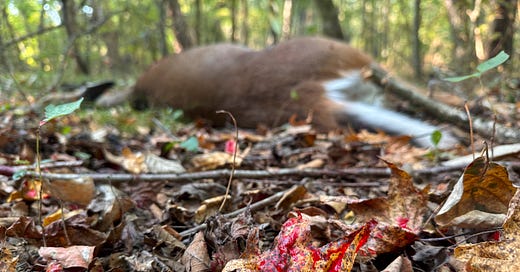Nothing has happened for hours.
And now everything is happening all at once.
It’s always this way, and I am always surprised.
I do not see them, but sense them somehow, and they’re already close. Maybe it’s that sweet cervid musk wafting up from the creek bottom, rising on the late-morning thermals as golden beams probe through the branches.
I sniff long …
Keep reading with a 7-day free trial
Subscribe to J. Carrol Sain to keep reading this post and get 7 days of free access to the full post archives.



